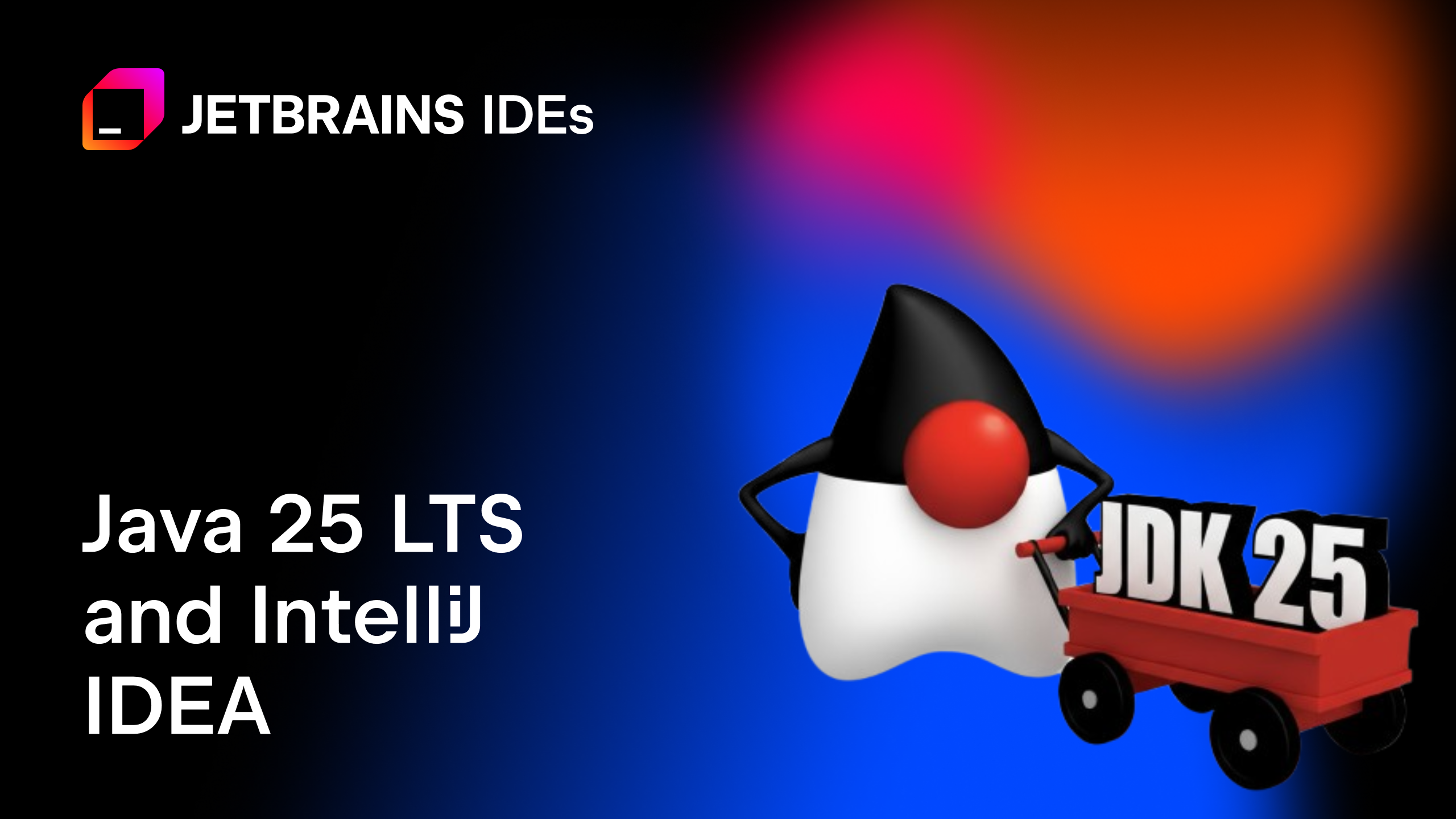IntelliJ IDEA
IntelliJ IDEA – the Leading IDE for Professional Development in Java and Kotlin
Top 10 UI Updates in IntelliJ IDEA for 2023
Hey there, fellow developers! Today, we want to share the most significant UI updates from 2023 that have transformed how IntelliJ IDEA looks and functions.
New UI
Of course, the highlight of our recent updates was the launch of our new, clean, and modern UI. This was first announced at the end of 2022, but the UI truly began to flourish in 2023. The new UI was designed to help you focus more on your code and access essential tools faster.
This year, the IntelliJ IDEA UI gained several exciting enhancements, including a compact mode, a revamped Run widget, a fresh Dark theme, the ability to personalize the main toolbar via a context menu, and much more.
Check out this blog post for more details.
Color-coded editor tabs
We made navigating different file types in the editor a whole lot easier! Now, editor tabs come with default color-coded highlighting. This matches their look in the Project tool window, making switching between various files much easier when working with a busy screen. This comes with the added bonus of giving you a more vibrant and organized editing experience!

You can customize this setting in Settings/Preferences | Appearance & Behavior | File Colors.

Colored project headers
We’ve introduced colored headers to make it visually easier to switch between your open projects. Each project can have its own unique color and icon, so you’ll always know which project you’re working on.
And there’s more – these headers come with fun, predefined colors, but you can change them to whichever ones you like! Just right-click on a header, select Change Toolbar Color in the context menu, and pick your favorite shade. Not into colors? No problem. You can turn this feature off at any time by deselecting Use Project Colors in Toolbar from the same menu.

Run to Cursor inlay option in the debugger
When you’re knee-deep in debugging and stepping doesn’t bring you to the desired line of code, the Run to Cursor inlay option lets you land exactly where you want. Once your program is suspended, just hover over your target line, click on the Run to Cursor popup, and you’re there. You can also activate this feature by pressing ⌥F9 on macOS or Alt+F9 on Windows once you’ve positioned the cursor on the line you’re interested in.

In-editor performance hints
This year, the IntelliJ Profiler’s UI received a fantastic makeover! We rolled out in-editor hints – something that we see as a game-changer when it comes to understanding your code’s performance, line by line, helping you fix performance problems quicker than ever.
With this feature, the IntelliJ Profiler’s data now appears directly in your editor. You’ll see the execution time and memory allocation data right next to the relevant lines of code, in the gutter. And to make things even easier, these annotations come in different colors. This helps you instantly spot which methods need your attention – those eating up most of the parent method’s resources are marked in red, and if they’re drastically impacting total execution time, you’ll also see a fire icon.

These inline performance hints are enabled by default. If you prefer to work without them, no problem! Just right-click on any of the annotations and select Close Line Annotations to disable them.
Floating toolbar
An exciting new feature, the floating toolbar, pops up right next to the code you’re working on. It’s packed with quick-edit actions like Extract, Surround, Reformat, and Comment.
If you want to fine-tune this toolbar to your liking, just click on the kebab menu (those three little vertical dots) to personalize it. And if you ever feel like it’s in the way, no worries – you can easily hide it, either by selecting Don’t Show Toolbar from the same menu or by heading to Settings/Preferences| Advanced Settings | Editor and selecting the Hide floating toolbar for code editing box.

Improved main toolbar customization
Customizing the new UI’s main toolbar has become much easier and more fun in 2023. You can now simply use the dropdown menu to quickly pick and add the tools you need. Just right-click on any widget, select Add to Main Toolbar, and explore all the available options.

Window layouts
Back in March 2023, we rolled out a feature allowing you to save various tool window layouts and switch between them, making your workspace customized to your needs. Then, later in the year, we added the Default layout option that lets you quickly reset your workspace to its original look. This layout is fixed and can’t be customized, but it’s easily accessible under Window | Layouts.

File sorting by modification time in the Project view
We added a much-requested feature to arrange files in the Project view by their modification time. This cool new function keeps your files organized automatically, updating their order every time you save changes in your project. To enable this feature, just head to the kebab menu in the Project view, and choose Tree Appearance | Sort by Modification Time.

Full IDE zoom
Say goodbye to eye pain! With IntelliJ IDEA, you can now zoom in and out of the entire interface, resizing all UI elements in one go. Just navigate to the main menu, and click on View | Appearance, where you can easily adjust the IDE’s scaling to your comfort.

Spoiler alert: in the next release, version 2024.1, we’re introducing the ability to zoom out your UI to below 100%!
We hope you’ve enjoyed these changes as much as we loved creating them. We’re excited to bring even more cool UI updates your way throughout 2024. Your feedback is invaluable to us, so please, let us know your thoughts in the comments below this blog post.
Subscribe to IntelliJ IDEA Blog updates









